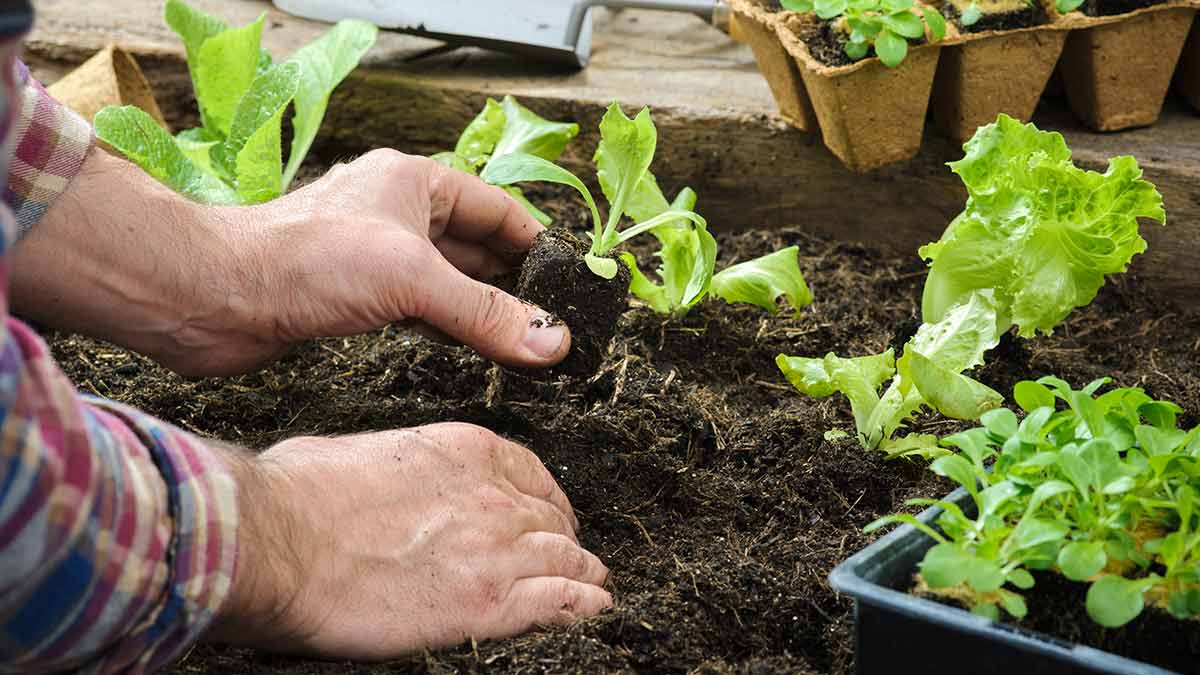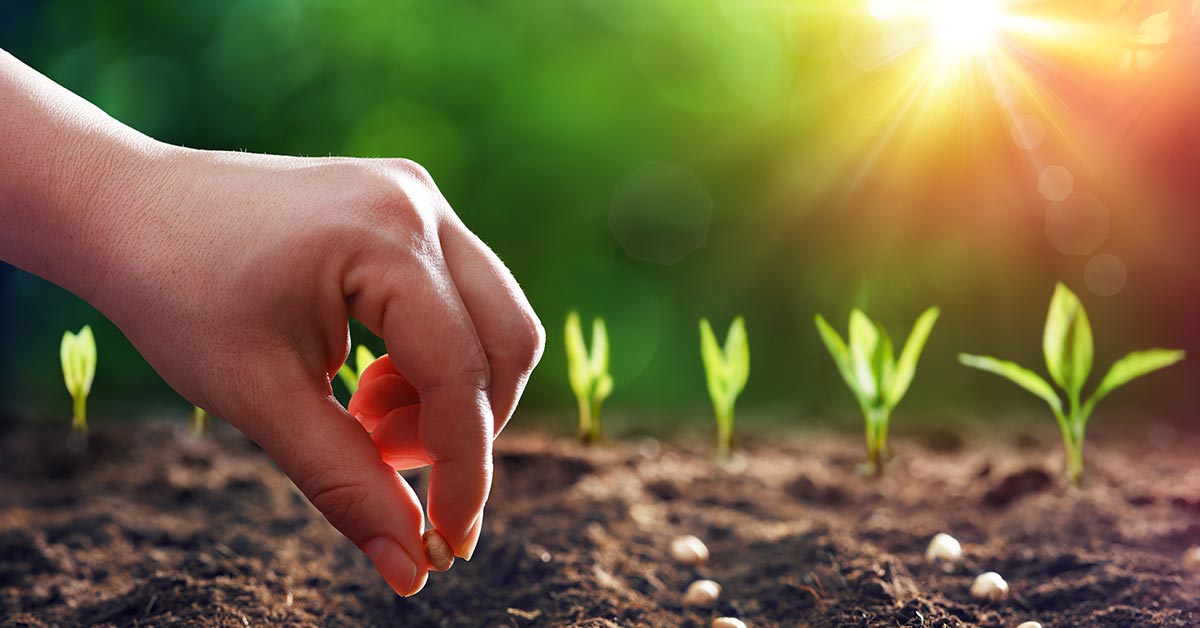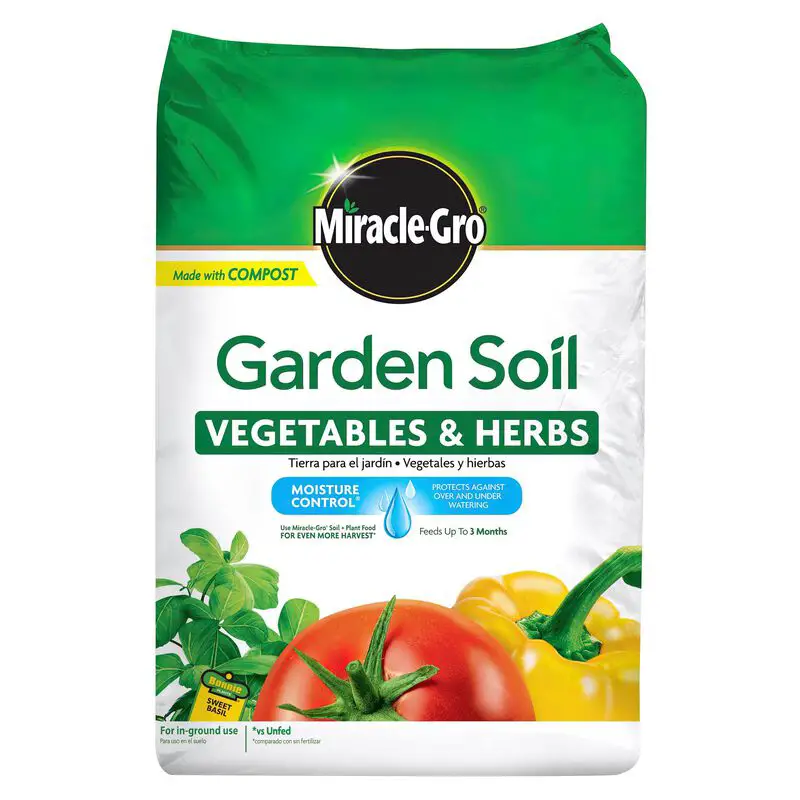Are you dreaming of a garden full of vibrant, healthy vegetables? The secret lies beneath your feet.
The right gardening soil for vegetables is crucial to your success. Imagine biting into a juicy tomato or crisp lettuce, all grown in your backyard. It’s possible, and it starts with the soil. You’ll discover why the right soil is your garden’s best friend.
We’ll explore what makes soil perfect for vegetables and how you can easily improve yours at home. With this knowledge, you can maximize your harvest and enjoy fresh produce all season long. So, are you ready to dig into the secrets of successful vegetable gardening? Let’s get started.
JUMP TO TOPIC
Types Of Soil For Vegetables
Choosing the right soil for your vegetable garden is crucial to ensure healthy growth and bountiful harvests. Different types of soil offer unique benefits and challenges, and understanding them can make all the difference in your gardening success. Whether you’re a seasoned gardener or just starting out, knowing which soil suits your vegetables best is key. Let’s dive into the various types of soil and explore their characteristics.
Loamy Soil
Loamy soil is often referred to as the gardener’s gold. It’s a balanced mix of sand, silt, and clay, offering excellent drainage and nutrient retention. This type of soil is ideal for most vegetables due to its ability to hold moisture while still allowing excess water to drain away.
Have you ever noticed how your carrots grow straighter in loamy soil? That’s because the balanced texture provides easy root penetration. If you want vegetables that flourish, loamy soil should be your go-to choice.
Sandy Soil
Sandy soil consists of large particles that provide excellent drainage. It warms up quickly in the spring, making it perfect for early planting. However, it lacks the ability to retain nutrients, which means frequent fertilization is necessary.
Think of sandy soil like a sieve; water runs through it quickly. If your vegetable garden is in a sandy area, consider adding organic matter to improve nutrient retention and moisture control.
Clay Soil
Clay soil is heavy and dense, retaining water and nutrients well. However, it can become compacted, making it challenging for roots to grow. Vegetables like broccoli and cabbage thrive in clay soil due to its nutrient-rich nature.
Do you struggle with clay soil in your garden? Try mixing in compost or gypsum to improve its texture and drainage capability. Your vegetables will thank you with healthier growth.
Silt Soil
Silt soil has fine particles, offering a smooth texture and good water retention. It’s fertile and promotes healthy vegetable growth. Yet, it can compact easily, restricting root access to air.
Ever noticed how lettuce grows well in silt soil? Its fine texture helps support leafy greens. To prevent compaction, you might want to incorporate organic matter regularly, ensuring air reaches the roots.
What type of soil do you have in your garden? Understanding these soil types can transform your vegetable gardening efforts, leading to thriving plants and abundant harvests. Take a moment to evaluate your soil and make the necessary changes. Your vegetables deserve the best foundation to grow upon.
Essential Nutrients For Growth
Growing healthy vegetables starts with the right soil. Essential nutrients in the soil fuel plant growth. These nutrients ensure strong roots and vibrant leaves. Understanding these key nutrients helps achieve a bountiful harvest. Let’s explore some of the most important nutrients for vegetable gardening.
Nitrogen
Nitrogen plays a crucial role in plant growth. It is vital for leafy vegetables like lettuce and spinach. This nutrient helps plants make proteins. Proteins are necessary for cell growth. Without nitrogen, plants may look pale or weak. Adding compost can boost nitrogen levels in the soil.
Phosphorus
Phosphorus aids in root development. Strong roots mean healthier plants. This nutrient also supports flowering and fruit production. Tomatoes and peppers thrive with good phosphorus levels. Bone meal is a great source of phosphorus. It can be mixed into the soil before planting.
Potassium
Potassium ensures plants can resist disease. It helps in water regulation within plants. This nutrient is important for overall plant health. Carrots and potatoes benefit from potassium-rich soils. Wood ash can provide potassium to your garden. Mix it into the soil carefully.
Soil Testing And Analysis
Testing soil helps gardeners grow healthy vegetables. It checks nutrients, pH levels, and soil quality. Understanding these factors ensures better plant growth and yield.
Understanding the quality of your gardening soil is crucial for growing healthy vegetables. Soil testing and analysis can reveal essential information about nutrient levels, pH balance, and potential contaminants. It’s like getting to know your soil personally, allowing you to make informed decisions to improve plant growth and yield. But how do you go about testing your soil? Let’s explore two effective methods: DIY Testing Kits and Professional Soil Analysis.Diy Testing Kits
DIY soil testing kits are a convenient option for those who want quick results. They are available at most garden centers and online stores. These kits typically test for pH, nitrogen, phosphorus, and potassium levels. Using a DIY kit is straightforward. You collect soil samples from different parts of your garden, mix them, and use the provided tools to analyze the samples. Results are usually displayed with easy-to-understand color charts. DIY kits are great for routine checks and offer immediate insights into your soil’s condition. However, they might not capture all the nuances of your soil’s health. Have you ever been surprised by the results from a DIY test? It might be worth considering a more detailed analysis.Professional Soil Analysis
For a comprehensive understanding of your soil, consider professional soil analysis. This service is offered by agricultural extensions, universities, and specialized labs. They provide detailed reports, which include micronutrient levels, organic matter content, and potential contaminants. The process involves collecting soil samples and sending them to a lab. The lab uses advanced equipment to provide precise measurements. This type of analysis can reveal hidden issues that DIY kits might miss. Professional analysis is more detailed and accurate, but it takes longer and costs more than DIY kits. However, the insights gained are invaluable, especially for serious gardeners aiming for optimal vegetable production. Have you ever thought about the long-term benefits of knowing exactly what your soil needs? This might be the key to transforming your vegetable garden. Soil testing is not just a chore, but a proactive step towards a flourishing garden. Understanding your soil’s needs can lead to more bountiful harvests, healthier plants, and a more satisfying gardening experience.
Credit: www.allthatgrows.in
Improving Soil Quality
Healthy soil enriches vegetable gardens, boosting growth and yield. Mixing compost helps retain moisture and provides essential nutrients. Regularly testing soil ensures balanced pH levels, crucial for plant vitality.
Improving the quality of your soil is a game-changer for growing healthy vegetables. It’s like giving your plants a nourishing feast that boosts their growth and yield. With a few practical tweaks, you can transform even the most stubborn patches of earth into fertile ground. Let’s dive into some actionable strategies to enhance your vegetable garden’s soil. ###Composting
Composting is a simple, natural way to enrich your soil. By recycling kitchen scraps and garden waste, you create a rich, organic mix. This compost boosts soil structure and provides essential nutrients. Imagine turning your vegetable peelings and coffee grounds into a powerful soil enhancer. You just need a compost bin or a designated pile in your garden. Stir it occasionally, and in a few months, you’ll have dark, crumbly compost ready to nourish your veggies. ###Mulching
Mulching is like giving your soil a protective blanket. It helps retain moisture, suppress weeds, and regulate soil temperature. Organic mulches, like straw or wood chips, break down over time, adding nutrients to the soil. Think about the last time you forgot to water your garden. Mulch reduces the frequency of watering by keeping the soil moist. Plus, it cuts down on weeds, so you spend less time weeding and more time enjoying your garden. ###Crop Rotation
Crop rotation is a smart way to manage soil fertility and prevent pests. By changing the location of your crops each year, you avoid depleting the soil of specific nutrients. This practice also disrupts the life cycle of pests and diseases. Picture this: planting tomatoes in the same spot year after year can lead to soil exhaustion and increased pests. Rotating them with legumes or leafy greens restores balance. It’s like giving your soil a chance to rejuvenate and your plants a fresh start. Improving soil quality requires some effort, but the results are rewarding. What changes will you make in your garden to see a bountiful harvest?Organic Soil Amendments
Organic soil amendments enhance the fertility and structure of gardening soil. They are crucial for growing healthy vegetables. These amendments improve water retention and nutrient availability. Using organic materials supports sustainable gardening practices.
Manure
Manure enriches soil with essential nutrients. It boosts nitrogen levels, promoting plant growth. Properly aged manure prevents plant burn. Fresh manure can harm plants, so composting is advised. Choose manure from cows, chickens, or horses for best results.
Bone Meal
Bone meal is rich in phosphorus. This nutrient is vital for root development. It strengthens vegetable stems and supports flowering. Apply bone meal in early spring for optimal effect. A balanced soil pH enhances its benefits.
Green Manures
Green manures are cover crops grown specifically to improve soil. They add organic matter and suppress weeds. After growing, they are tilled into the soil. Legumes are effective green manures. They fix nitrogen and improve soil health.

Credit: canadianfoodfocus.org
Water Management Techniques
Gardening soil for vegetables needs good water management techniques for healthy growth. Proper soil moisture ensures vegetables get nutrients. Use mulch and organic matter to retain water and improve soil structure.
When it comes to growing vegetables, water management is a crucial component of maintaining healthy soil. Without proper water techniques, your plants might either drown or dry up. It’s all about finding that sweet spot where the soil retains the right amount of moisture. Let’s dive into some practical water management techniques that can make a big difference in your garden.Drip Irrigation
Drip irrigation is a game-changer for vegetable gardens. This method delivers water directly to the plant roots, minimizing waste and ensuring consistent moisture levels. Think of it as a personalized watering system for each plant. Setting up a drip irrigation system might sound complicated, but it’s quite straightforward. You can start with a simple kit from your local garden center. Once installed, you’ll notice how much time you save on watering, allowing you more moments to enjoy your garden’s beauty. Have you ever noticed plants looking wilted even after a heavy rain? That’s where drip irrigation shines. It provides a steady flow of water, preventing the soil from drying out during hot days. Plus, by keeping the leaves dry, you reduce the risk of fungal diseases.Rainwater Harvesting
Rainwater harvesting is another excellent technique for water management. It’s all about collecting and storing rainwater for use during drier periods. This not only conserves water but can also save you money on your water bill. Installing rain barrels is a simple way to start harvesting rainwater. Place them under your downspouts to collect runoff from your roof. You’d be surprised how much water you can gather from a single rainstorm. Using rainwater for your vegetable garden is beneficial because it’s free of the chemicals often found in tap water. This can promote healthier plant growth. Have you ever thought about how rainwater might change the flavor of your veggies? Give it a try and see if you notice a difference. Water management techniques like drip irrigation and rainwater harvesting are not just about conserving water—they’re about nurturing your garden in the most efficient way possible. So, what steps will you take to improve your garden’s water management?Common Soil Problems
Gardening can bring immense joy, but soil problems can frustrate. Healthy soil is essential for thriving vegetable gardens. Yet, many face common soil issues. These problems affect plant growth and yield. Understanding these issues is the first step to solving them.
Soil Compaction
Soil compaction reduces the space for air and water. Plants struggle to grow in compacted soil. Roots find it hard to spread and absorb nutrients. Heavy machinery and foot traffic often cause compaction. Test your soil by digging a small hole. If it’s hard to dig, compaction may be a problem. Loosening the soil with a garden fork can help.
Ph Imbalances
pH levels affect nutrient availability in soil. Vegetables need a slightly acidic to neutral pH. Too acidic or alkaline soil can harm plant growth. Test soil pH with a simple home kit. Adjust pH by adding lime or sulfur to balance it. Regular testing ensures a healthy growing environment.
Nutrient Deficiencies
Vegetables need nutrients like nitrogen, phosphorus, and potassium. Lack of these nutrients leads to weak plants. Yellow leaves or stunted growth often signal deficiencies. Conduct a soil test to identify missing nutrients. Use organic compost or fertilizers to replenish the soil. Balanced soil nutrition leads to a bountiful harvest.
Seasonal Soil Preparation
Preparing your garden soil for vegetables is a year-round commitment. Seasonal soil preparation ensures your veggies get the nutrients they need at the right time. By adapting your soil practices to the changing seasons, you can maximize your garden’s productivity and health.
Spring Soil Prep
Spring is the season of renewal, and your soil needs a fresh start too. Begin by testing the soil for nutrient levels and pH balance. This helps you know what your soil lacks.
Consider adding organic matter like compost. It enriches the soil and improves its texture. This step is crucial as your vegetables rely on healthy soil for growth.
Think about drainage. If your soil holds too much water, your plants can suffer. You can enhance drainage by adding sand or perlite. Have you thought about trying raised beds for better control?
As the days get warmer, weeds start to appear. Regularly check your garden and remove them before they compete with your veggies. It’s easier than you think to keep weeds at bay with consistent attention.
Fall Soil Maintenance
Fall is the time to prepare your soil for the coming cold months. Start by clearing away any plant debris from the summer. This prevents disease and pests from lingering.
Consider cover crops like clover or rye. They protect the soil and add nutrients when they decompose. Cover crops are a natural way to boost soil health without much effort.
Evaluate your soil’s moisture levels. Fall rains can saturate the ground, affecting next season’s planting. You can improve moisture control with mulching. Have you tried using leaves from your backyard as mulch?
Reflect on the successes and challenges of your garden this year. What worked well? What could be improved? Use these insights to adjust your soil preparation strategies for next year.
Your garden soil is the foundation of your vegetable success. By focusing on seasonal preparation, you ensure a bountiful harvest. What changes will you make to your soil routine this year?

Credit: www.gardentech.com
Frequently Asked Questions
What Is The Best Soil For Vegetable Gardening?
The best soil for vegetable gardening is rich, loamy, and well-draining. It should have a balanced mix of sand, silt, and clay. Adding organic matter like compost improves nutrient content and structure. Testing soil pH ensures optimal growth, typically aiming for a neutral pH around 6.
0 to 7. 0.
How Do I Improve Poor Garden Soil?
To improve poor garden soil, add organic matter such as compost or well-rotted manure. This enhances soil structure and nutrient content. Regularly testing soil pH and adjusting as needed can also help. Mulching helps retain moisture and suppress weeds, promoting healthier vegetable growth.
Can I Use Potting Soil For Vegetables?
Potting soil is suitable for container-grown vegetables but not ideal for garden beds. It drains well and is lightweight, perfect for pots. However, for garden beds, a mix of garden soil with organic matter is better. This provides essential nutrients and structure for healthy vegetable growth.
How Often Should I Test My Garden Soil?
Testing garden soil every 2-3 years is recommended for optimal vegetable growth. Regular testing helps identify nutrient deficiencies or imbalances. It ensures pH levels are suitable for vegetables. Adjusting soil amendments based on test results enhances plant health and yields.
Conclusion
Gardening soil is crucial for healthy vegetable growth. It provides nutrients and support. Choosing the right soil ensures your plants thrive. Consider soil type, pH level, and drainage. Organic matter improves soil quality. Compost adds nutrients naturally. Test soil to know its needs.
Adjust accordingly for the best results. Healthy soil leads to a bountiful harvest. Enjoy fresh, homegrown vegetables. Your garden will reward your efforts. Happy gardening!

